Applied Mathematics
Vol.4 No.8(2013), Article ID:35482,3 pages DOI:10.4236/am.2013.48161
On the Harmonic Index of Triangle-Free Graphs*
Department of Applied Mathematics, School of Informatics, Guangdong University of Foreign Studies, Guangzhou, China
Email: liujianxi2001@gmail.com, ljx@oamail.gdufs.edu.cn
Copyright © 2013 Jianxi Liu. This is an open access article distributed under the Creative Commons Attribution License, which permits unrestricted use, distribution, and reproduction in any medium, provided the original work is properly cited.
Received June 7, 2013; revised July 7, 2013; accepted July 14, 2013
Keywords: Harmonic Index; Minimum Degree; Triangle-Free
ABSTRACT
The harmonic index of a graph  is defined as
is defined as , where
, where  denotes the degree of a vertex
denotes the degree of a vertex  in
in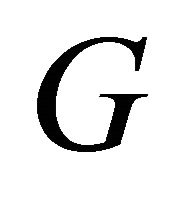 . In this work, we give another expression for the Harmonic index. Using this expression, we give the minimum value of the harmonic index for any triangle-free graphs with order
. In this work, we give another expression for the Harmonic index. Using this expression, we give the minimum value of the harmonic index for any triangle-free graphs with order  and minimum degree
and minimum degree  for
for  and show the corresponding extremal graph is the complete graph
and show the corresponding extremal graph is the complete graph .
.
1. Introduction
All graphs considered in the following will be simple. Let 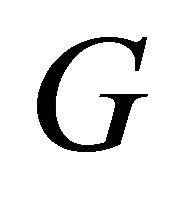 be a graph with vertex set
be a graph with vertex set  and edge set
and edge set . The order and size of graph
. The order and size of graph  are the number of its vertices and number of its edges, respectively. For undefined terminology and notations, we refer the reader to [1].
are the number of its vertices and number of its edges, respectively. For undefined terminology and notations, we refer the reader to [1].
For a graph , the harmonic index
, the harmonic index  is defined as
is defined as

It has been found that the harmonic index, which is a special case of general sum-connectivity index, correlates well with the Randić index [2,3] and the 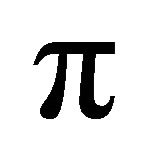 -electronic energy of benzenoid hydrocarbons [4,5]. In [6], Favaron et al. considered the relation between harmonic index and the eigenvalues of graphs. Zhong [7] found the minimum and maximum values of the harmonic index for connected graphs and trees, and characterized the corresponding extremal graphs. Recently, Wu et al. [8] give a best possible lower bound for the harmonic index of a graph (a triangle-free graph, respectively) with order
-electronic energy of benzenoid hydrocarbons [4,5]. In [6], Favaron et al. considered the relation between harmonic index and the eigenvalues of graphs. Zhong [7] found the minimum and maximum values of the harmonic index for connected graphs and trees, and characterized the corresponding extremal graphs. Recently, Wu et al. [8] give a best possible lower bound for the harmonic index of a graph (a triangle-free graph, respectively) with order  and minimum degree at least two and characterize the extremal graphs. In this work, we will give a best possible lower bound for the harmonic index of a triangle-free graph with order
and minimum degree at least two and characterize the extremal graphs. In this work, we will give a best possible lower bound for the harmonic index of a triangle-free graph with order  and minimum degree at least
and minimum degree at least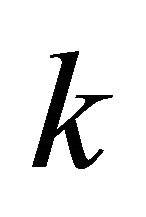 . We show the corresponding extremal graph is the complete bipartite graph
. We show the corresponding extremal graph is the complete bipartite graph .
.
2. Another Expression for the Harmonic Index
Before we go forwards to investigate the relationship between the Harmonic index and the minimum degree  of triangle-free graphs, we will give another expression for the Harmonic index in this section, which is vital in sequel.
of triangle-free graphs, we will give another expression for the Harmonic index in this section, which is vital in sequel.
Let  be a graphs with order
be a graphs with order  and minimum degree
and minimum degree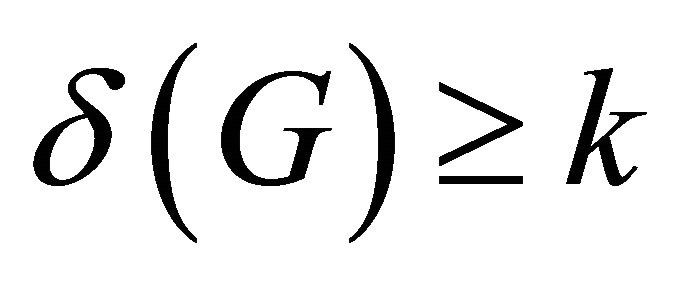 . Denote by
. Denote by 
 , the number of edges joining the vertices of degrees
, the number of edges joining the vertices of degrees  and
and . Denote by
. Denote by  the number of vertices of degree of
the number of vertices of degree of . Then
. Then
 (1)
(1)
 (2)
(2)
By counting the edges that incident to a vertex of degree ,
,  , one obtains
, one obtains
 (3)
(3)
Substituting Equation (3) back into Equation (2) and performing appropriate rearrangements, we get
 (4)
(4)
Now, rewriting Equation (1) as
 (5)
(5)
and combining Equations (4) and (5) so as to eliminate the term , we arrive at
, we arrive at

i.e.,
 (6)
(6)
 (7)
(7)
Remark 2.1 From (7), we see that  for
for
 vertex graph
vertex graph  and the equality holds if and only if
and the equality holds if and only if 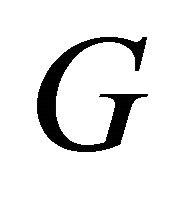 is regular.
is regular.
3. Main Results
First, we give a lower bound for any triangle-free graph with order  and size
and size .
.
Lemma 3.1 For any triangle-free graph  with order
with order  and size
and size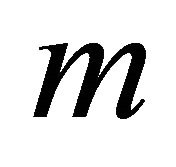 , then
, then

where equality holds if and only if  is of the form
is of the form  for some natural numbers
for some natural numbers , and
, and
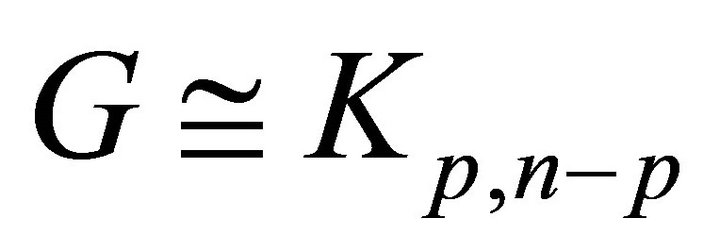 .
.
Proof. For any edge  of
of , we have
, we have  , or it would contain triangle(s). By (1), we have
, or it would contain triangle(s). By (1), we have

equality holds if and only if  for every
for every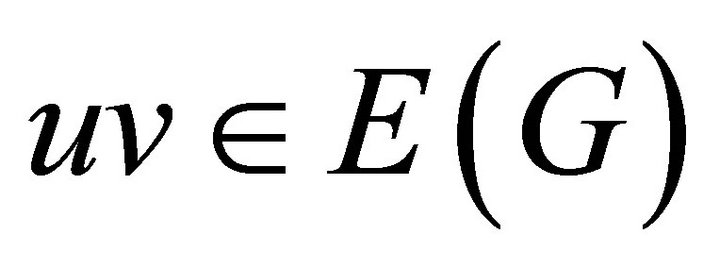 . Thus, if we denote
. Thus, if we denote  for an edge
for an edge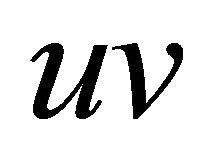 , then each of the
, then each of the  neighbors, including
neighbors, including , of
, of  should has degree
should has degree . Similarly, each of the
. Similarly, each of the  neighbors of
neighbors of 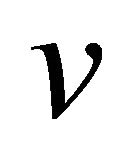 has degree
has degree . Therefore,
. Therefore,  and
and .
.
Lemma 3.2 Let , for
, for then
then  is decreasing in
is decreasing in  and increasing in
and increasing in .
.
Proof. We have
 and
and  for
for  .
.
Theorem 3.3 Let  be a triangle-free graph with order
be a triangle-free graph with order 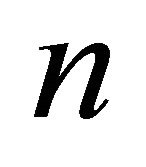 and the minimum degree
and the minimum degree 
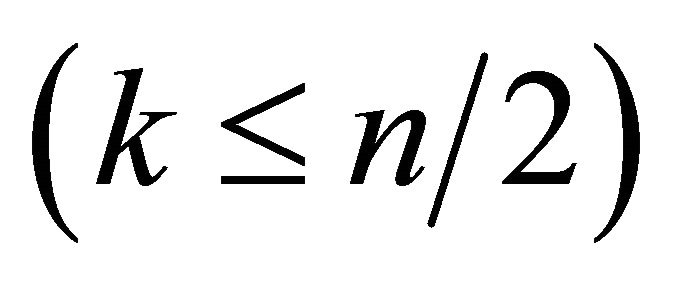 . Then
. Then

where equality holds if and only if .
.
Proof. Assume  is the size of graph
is the size of graph . We divide the proof into the following two cases.
. We divide the proof into the following two cases.
Case 1. . The result follows by Lemma 3.1.
. The result follows by Lemma 3.1.
Case 2. . Note that the maximum degree
. Note that the maximum degree  for graph
for graph , or it would contain triangle(s). By (6) and Lemma 3.2, we have
, or it would contain triangle(s). By (6) and Lemma 3.2, we have

For equalities to hold above, we must have  , which means that
, which means that .
.
REFERENCES
- J. A. Bondy and U. S. R. Murty, “Graph Theory,” Springer, 2008. doi:10.1007/978-1-84628-970-5
- X. Li and I. Gutman, “Mathematical Aspects of Randic’- Type Molecular Structure Descriptors,” Mathematical Chemistry Monographs, Vol. 1, Kragujevac, 2006.
- X. Li and Y. T. Shi, “A Survey on the Randić Index,” MATCH: Communications in Mathematical and in Computer Chemistry, Vol. 59, No. 1, 2008, pp. 127-156.
- B. Lučić, S. Nikolić, N. Trinajstić, B. Zhou and S. I. Turk, “Sum-Connectivity Index,” In: I. Gutman and B. Furtula, Eds., Novel Molecular Structure Descriptors-Theory and Applications I, University of Kragujevac, Kragujevac, 2010, pp. 101-136.
- B. Lučić, N. Trinajstić and B. Zhou, “Comparison between the Sum-Connectivity Index and Product-Connectivity Index for Benzenoid Hydrocarbons,” Chemical Physics Letters, Vol. 475, No. 1-3, 2009, pp. 146-148. doi:10.1016/j.cplett.2009.05.022
- O. Favaron, M. Mahó and J. F. Saclé, ”Some Eigenvalue Properties in Graphs (Conjectures of Graffiti-II),” Discrete Mathematics, Vol. 111, No. 1-3, 1993, pp. 197-220. doi:10.1016/0012-365X(93)90156-N
- L. Zhong, “The Harmonic Index for Graphs,” Applied Mathematics Letters, Vol. 25, No. 3, 2012, pp. 561-566. doi:10.1016/j.aml.2011.09.059
- R. Wu, Z. Tang and H. Deng, “A Lower Bound for the Harmonic Index of a Graph with Minimum Degree at Least Two,” Filomat, Vol. 27, No. 1, 2013, pp. 51-55.
NOTES
*Research supported by the National Natural Science Foundation of China (No.11101097) and Foundation for Distinguished Young Talents in Higher Education of Guangdong, China (No.LYM11061).

